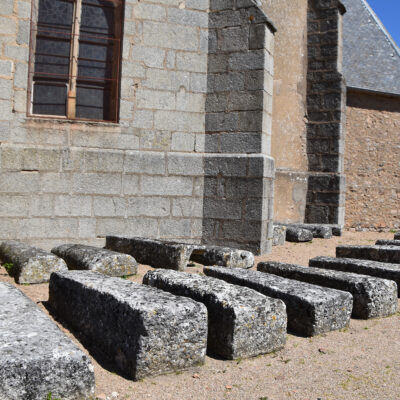

Two hypotheses emerge concerning the existence of these tombs: – either there was a flourishing industry in this region during the Merovingians: that of limestone tombs. Indeed, most of the sarcophagi found Quarré turned out to be empty. – or Quarré les Tombes was considered to be a sacred burial place.
The natural acidity of the Morvan soil could explain the fact that the graves were found empty, the bones having been quickly disintegrated by organic acids. On the other hand, successive looting could explain the absence of weapons or objects in the sarcophagi of Quarré.


In the fourteenth century, it was only a small chapel dedicated to St. George; legend has it that he saved Quarré from a fierce attack by the Saracens. It was rebuilt in the sixteenth century but today only the choir remains. Indeed, in the eighteenth century, the parish priest Blaise Begon had both the nave and the transept enlarged whilst having the bell tower rebuilt. It was Father Henry who, during the nineteenth century, gave the church its current appearance.
The pulpit and carved wooden bench are Louis XIII style. The Baron de Chastellux, who died in 1617, is buried in the church, as is his father…